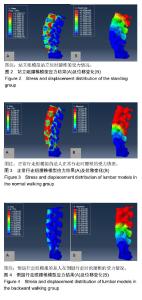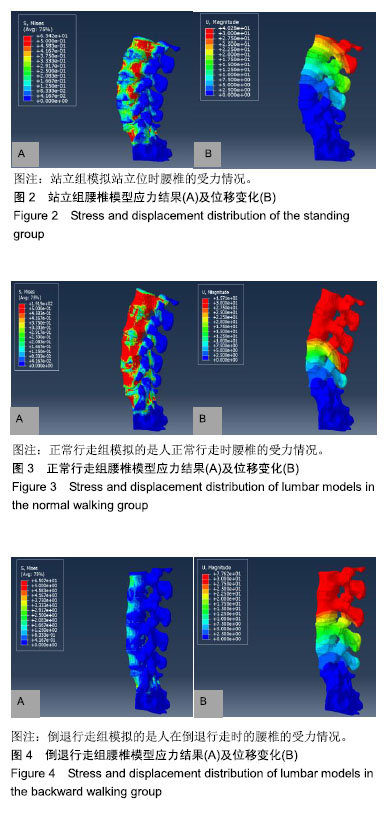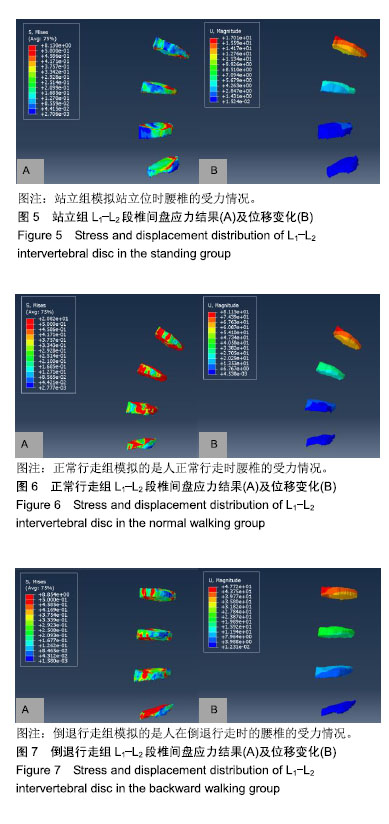| [1]高晓平,刘彤,陈和木. 腰腹肌肌力训练改善腰椎间盘突出症患者腰椎功能及预防复发的作用[J]. 中国组织工程研究, 2003, 7(23): 3220-3221. [2]吴辉,胡凌云,林宏. 复发性腰椎间盘突出症的微创手术治疗[J]. 重庆医学, 2014, 43(27):3556-3558.[3]王良兴. 针刺牵引结合倒走锻炼治疗腰椎间盘突出80例[J]. 福建中医药, 2010, 41(3):37-37.[4]Pope MH, Novotny JE. Spinal biomechanics. J Biomech Eng. 1993;115(4B):569.[5]Dufek J, House A, Mangus B, et al. Backward walking: A possible active exercise for low back pain reduction and enhanced function in athletes. J Exer Phys Online. 2011; 14(2):17-26.[6]Nadeau S, Amblard B, Mesure S, et al. Head and trunk stabilization strategies during forward and backward walking in healthy adults. Gait Posture. 2003;18(3):134-142.[7]Sun D, Liu P, Cheng J, et al. Correlation between intervertebral disc degeneration, paraspinal muscle atrophy, and lumbar facet joints degeneration in patients with lumbar disc herniation. BMC Musculoskeletal Disord. 2017;18(1):1-7.[8]Panjabi MM. Clinical spinal instability and low back pain. J Electromyogr Kinesiol. 2003;13(4):371-379.[9]Grob D, Dvorák J, Panjabi MM, et al. External fixator of the cervical spine--a new diagnostic tool. Der Unfallchirurg. 1993; 96(96):416-421.[10]Panjabi MM, Lydon C, Vasavada A, et al. On the understanding of clinical instability. Spine.1994;19(23):2642-2650.[11]Olerud S, Sjostrom L. Spontaneous effect of increased stability of the lower lumbar spine in cases of severe chronic back pain the answer of an external transpeduncular fixation test. Clin Orthop Relat Res. 1986;20(3):67-74[12]吕晓梅,赵焕彬,张海涛. 健身反向走的生物力学分析[J]. 中国体育科技, 2008, 44(4):139-143.[13]陈娟,马燕红,胡海,等. 倒走生物力学及运动控制的研究进展[J]. 中国康复,2018,33(2):159-162.[14]张苏婉,程肖芳,余松. 倒走运动联合八段锦锻炼对预防腰椎间盘突出症复发的临床观察[J].河北中医,2013,35(9):1302-1303.[15]王平,林江. 倒走锻炼对增强腰椎间盘突出症100例疗效的临床观察和护理[J]. 光明中医,2011,26(6):1250-1251.[16]霍莉峰,倪衡建.数字骨科应用与展望:更精确?个性?直观的未来前景[J].中国组织工程研究,2015,19(9):1457-1462.[17]章莹,尹庆水,万磊,等. 数字技术在创伤骨科的应用 临床数字骨科(一)[J]. 中国骨科临床与基础研究杂志, 2011,3(2):113-119.[18]魏峰. 基于CT图像的人体腰椎有限元模型构建与力学分析[D]. 南京:南京理工大学,2015.[19]刘慧,张喜林,周楠, 等.步态仿真下腰椎间盘退变合并骶髂关节紊乱的有限元分析[J].医用生物力学,2017,32(1):46-53.[20]Rho JY, Hobatho MC, Ashman RB. Relations of mechanical properties to density and CT numbers in human bone. Med Eng Phys. 1995;17(5):347-355.[21]孟庆华,鲍春雨. 青少年坐姿时腰部受力数值模拟[J]. 应用力学学报, 2013, 30(1):120-124.[22]刘潇,刘耀升,刘蜀彬. 有限元法分析腰椎融合与非融合后的应力分布[J]. 中国组织工程研究, 2018,22(3):409-414.[23]吴小辉,刘小聪,陶平,等.人体胸腰段三维有限元力学的仿真研究[J].微创医学,2017,12(3):315-319. [24]Urban JPG, Maroudas A. The measurement of fixed charged density in the intervertebral disc. Biochimica et Biophysica Acta. 1979;586(1):166-178.[25]Urban JPG, Maroudas A. Swelling of the intervertebral disc in vitro. Connect Tissue Res. 1981;9(1):1-10.[26]Marchand F, Ahmed AM. Investigation of the laminate structure of lumbar disc anulus fibrosus. Spine. 1990;15(5):402-410.[27]Iatridis JC, Mente PL, Stokes IAF, et al. Compression-induced changes in intervertebral disc properties in a rat tail model. Spine. 1999;24(10):996-1002.[28]Kroeber MW, Unglaub F, Wang H, et al. New in vivo animal model to create intervertebral disc degeneration and to investigate the effects of therapeutic strategies to stimulate disc regeneration. Spine. 2002;27(23):2684-2690.[29]Stoll TM, Dubois G, Schwarzenbach O. The dynamic neutralization system for the spine: a multi-center study of a novel non-fusion system. Eur Spine J. 2002;11(2 Supplement): S170-S178.[30]曾祥宏,刘兵.腰椎间盘突出症的病因及其机制分析[J].长江大学学报(自科版),2010,7(3):72-73. |



